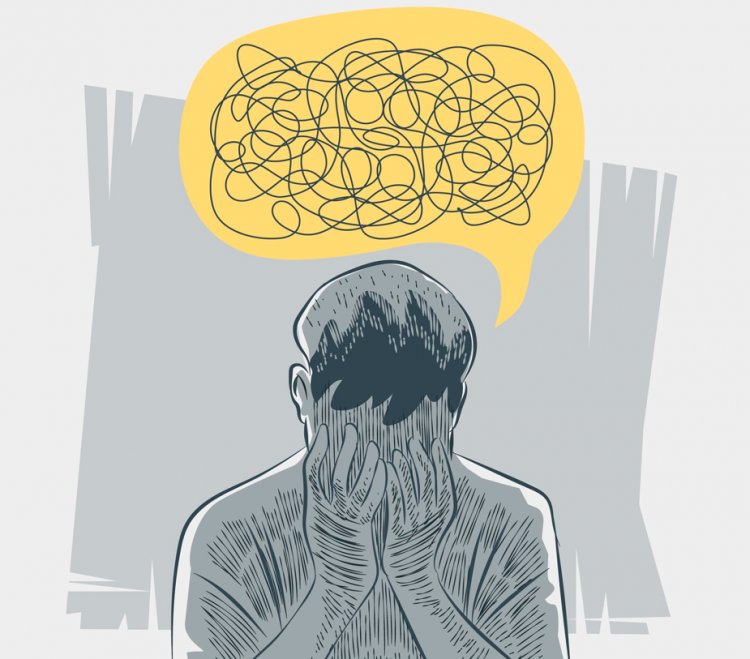Cognitive Chaos: Exploring the Triggers and Treatment of Delirium
Delirium is an acute and often fluctuating disturbance of consciousness characterized by an impaired ability to focus, sustain, or shift attention, and by changes in cognition or the development of perceptual disturbances. It is a common but serious condition, particularly prevalent among hospitalized patients, older adults, and individuals with pre-existing cognitive impairments. Understanding the nuances of delirium is critical for healthcare professionals, caregivers, and patients alike.

Pathophysiology
The exact pathophysiology of delirium is not completely understood, but it is believed to result from a complex interplay of neurotransmitter imbalances, inflammatory responses, and disruptions in neural network connectivity. Key factors include:
Neurotransmitter Dysregulation
Delirium has been linked to imbalances in neurotransmitters such as acetylcholine, dopamine, and gamma-aminobutyric acid (GABA). For example, decreased acetylcholine levels can impair cognitive function, while excess dopamine activity can lead to hallucinations and agitation.
Inflammatory Processes
Systemic infections and other inflammatory conditions can lead to increased cytokine levels, which may affect brain function and contribute to delirium.
Stress Response
The body's response to acute stress, including surgery or severe illness, can trigger a cascade of hormonal changes and sympathetic nervous system activation that affect brain function.
Etiology
Delirium can arise from multiple etiologies, often involving a combination of predisposing and precipitating factors. These include:
Medical Conditions
Acute illnesses such as infections (e.g., sepsis, pneumonia, urinary tract infections), metabolic disturbances (e.g., hypo/hyperglycemia, electrolyte imbalances), and organ failure (e.g., renal or hepatic failure) are common triggers.
Medications
Polypharmacy, particularly the use of psychoactive drugs (e.g., benzodiazepines, anticholinergics, opioids), can precipitate delirium. Withdrawal from substances like alcohol and benzodiazepines can also cause delirium.
Surgical Procedures
Postoperative delirium is a well-recognized complication, particularly in older adults and those undergoing major surgeries, including cardiac and orthopedic procedures.
Neurological Disorders
Pre-existing cognitive impairments, such as dementia, increase the risk of delirium. Acute neurological events like strokes or traumatic brain injuries can also be causative.
Environmental Factors
Factors such as sleep deprivation, sensory deprivation or overload, and physical restraints can contribute to delirium in hospital settings.
Clinical Presentation
The presentation of delirium can vary widely but typically includes:
Disturbance in Attention
Patients may have difficulty focusing, sustaining, or shifting attention. They are easily distractible and unable to follow conversations or instructions.
Altered Level of Consciousness
This can range from hypervigilance and agitation to lethargy and stupor.
Cognitive Impairments
Delirium often involves disorganized thinking, memory deficits, disorientation to time and place, and language disturbances.
Perceptual Disturbances
Hallucinations (often visual) and delusions are common, contributing to anxiety and paranoia.
Psychomotor Disturbances
These can include hyperactive symptoms (e.g., restlessness, agitation), hypoactive symptoms (e.g., lethargy, reduced motor activity), or mixed presentations.
Diagnosis
Diagnosing delirium requires careful clinical assessment. Key steps include:
History and Physical Examination
A thorough medical history and physical exam help identify potential underlying causes and distinguish delirium from other cognitive disorders.
Cognitive Assessment Tools
Tools such as the Confusion Assessment Method (CAM) and the Delirium Rating Scale (DRS) are commonly used to aid in diagnosis.
Laboratory and Imaging Studies
Blood tests, urine analysis, and imaging studies (e.g., CT or MRI scans) are often conducted to identify underlying medical conditions.
Management and Treatment
Effective management of delirium involves addressing the underlying causes, providing supportive care, and implementing preventive strategies.
Identify and Treat Underlying Causes
This might involve treating infections with antibiotics, correcting metabolic imbalances, or adjusting medications that may be contributing to delirium.
Supportive Care
Ensuring a safe and supportive environment is crucial. This includes:
- Environmental Modifications: Providing a calm, well-lit, and quiet environment, using clocks and calendars to help orient the patient, and ensuring the presence of familiar objects and people.
- Reorientation Techniques: Regularly reorienting the patient to their surroundings, time, and situation.
- Hydration and Nutrition: Ensuring adequate fluid and nutritional intake.
Pharmacological Interventions
While non-pharmacological approaches are preferred, medications may be necessary for severe agitation or psychotic symptoms. Low-dose antipsychotics (e.g., haloperidol, quetiapine) are commonly used, but should be used cautiously and for the shortest duration necessary.
Prevention
Preventing delirium involves mitigating risk factors and promoting overall health:
Early Mobilization
Encouraging physical activity and mobility to prevent deconditioning.
Sleep Hygiene
Promoting regular sleep patterns and minimizing disruptions.
Cognitive Engagement
Providing stimulating activities to engage the mind.
Medication Review
Regularly reviewing and optimizing medications to avoid polypharmacy and high-risk drugs.
Comprehensive Geriatric Assessment
For older adults, comprehensive assessments can help identify and address factors that increase the risk of delirium.
Prognosis
The prognosis of delirium varies based on the underlying cause, severity, and promptness of treatment. While many patients recover fully, some may experience prolonged cognitive deficits or an increased risk of long-term cognitive decline, particularly older adults with pre-existing cognitive impairments. Delirium is also associated with increased mortality rates, particularly in hospitalized and critically ill patients.
In conclusion, delirium is a multifaceted and potentially severe condition requiring timely diagnosis and intervention. By understanding its causes, symptoms, and treatment options, healthcare providers can improve patient outcomes and reduce the incidence and impact of delirium. Preventive measures, early detection, and comprehensive care are essential components in the management of this complex condition.
Disclaimer
The information provided in this article is for educational purposes only and should not be considered medical advice. If you have any health concerns or are experiencing symptoms, it is important to consult with a healthcare professional, such as a doctor or clinic, for proper diagnosis and treatment. Always seek the advice of your doctor or other qualified health provider with any questions you may have regarding a medical condition. Do not disregard professional medical advice or delay in seeking it because of something you have read in this article.
#Health #Delirium #MedicalAdvice #CognitiveImpairment #Healthcare #PatientCare #MedicalConditions #MentalHealth #ClinicalPresentation #Diagnosis #Treatment #Prevention
What's Your Reaction?





















